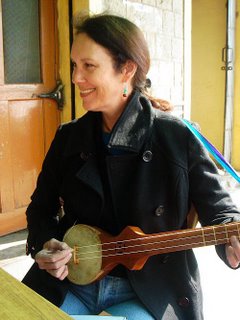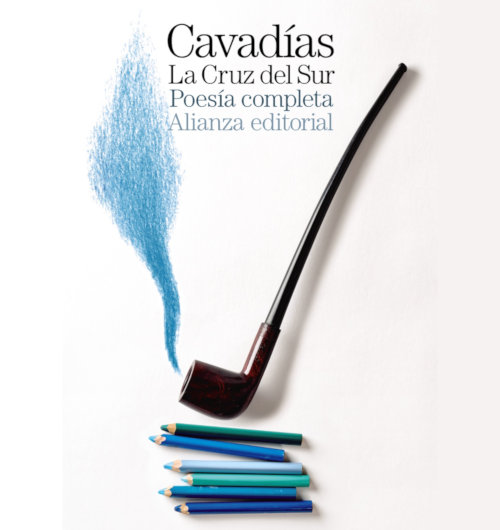
Here in McLeod Ganj, Dharamsala, the Dalai Lama's residence, views of the Dhauladhar mountain range are stunning, but no snow till January, it's said. Everyone is gearing up to head down south for the Kalachakra event. I am here trying to confirm my press pass for this mammoth Buddhist free-for-all (and trying to picture what it looks like when Tibetan and Western Buddhists come to rural south India to have a free-for-all). My filmmaker friend brought a letter from an Indian production company (who have never met me) stating that I am covering the event for them. Hopefully the office won't notice that I don't own a video camera. I expect this entire process to take about a week. At least it's a rather Christmasy atmosphere. There are giant drooping fir trees on the steep hillsides that just cry out to be laden with snowfall. The local people use burros to transport building materials up and down the narrow, somewhat rocky roads, and the burros wear sleigh bells that make a Christmas jingle.
Street life is a lively mix of tie-dyed dreadlocked backpackers, Tibetan monks and nuns in burgundy robes, elderly Tibetans in full traditional dress, the younger generation (both Tibetan and Indian) in skintight jeans and jackets, and the older generation of Himachal hill farmers driving donkey trains and carrying loads of firewood to their villages. Every once in a while you see what looks like a giant walking Triffid or the old English Green Man coming up the street; it's a local person carrying a backload full of green-leaved tree trimmings. It always reminds me of those scary moving trees in The Wizard of Oz. This has a threefold use - their cattle (cows and hardy longhaired mountain goats) eat the leaves for fodder; then the branches are used for firewood; and the cycle is completed with the animals' resultant dung being dried in the sun and used for fuel. In Bihar I passed enormous rows of dung packed neatly into cakes and drying near the railroad tracks (in Bihar, though, it was probably water buffalo and bullock dung).
 Yesterday we had lunch with my friend Stirling, a fellow native Tennessean, who's been here working with the Tibetan refugee children since last May. She was a goldmine of information about the refugee situation here and the politics of visiting Tibet itself. Then we went to see the Tibetan museum in the Library of Tibetan Works and Archives, and the Nechung Monastery, home of the Tibetan State Oracle. You'd be very lucky to catch an actual "performance," if that's the right term, of the oracle, the official advisor to the Dalai Lama, but it is possible. Stirling got to see one last week (it's on her blog, A Peaceful Adventure). If you're here long enough, or have a network of Tibetan friends, you might be invited to or clued in on one of his deliveries. The Dalai Lama consults him on various occasions (the reason for this is never publicly revealed).
Yesterday we had lunch with my friend Stirling, a fellow native Tennessean, who's been here working with the Tibetan refugee children since last May. She was a goldmine of information about the refugee situation here and the politics of visiting Tibet itself. Then we went to see the Tibetan museum in the Library of Tibetan Works and Archives, and the Nechung Monastery, home of the Tibetan State Oracle. You'd be very lucky to catch an actual "performance," if that's the right term, of the oracle, the official advisor to the Dalai Lama, but it is possible. Stirling got to see one last week (it's on her blog, A Peaceful Adventure). If you're here long enough, or have a network of Tibetan friends, you might be invited to or clued in on one of his deliveries. The Dalai Lama consults him on various occasions (the reason for this is never publicly revealed). The Oracle is an otherwise ordinary man who has inherited this position; he goes into deep trance at which time he is posessed by the spirit of Dorje Drakden (which means something like "Thunderbolt Dragon"), protector deity of Tibet, and gives advice on everything from politics to weather forecasts. Ordinary people can't udnerstand this, though; it's rendered in highly symbolic language and decoded by His Holiness and the advisors. Once the deity assumes posession, the attendants tie on an enormous helmet with a strangling knot beneath his chin; it's so heavy and tight there's no way he could wear it if he were not in a trance. Once the deity "leaves" the man's body, attendants rush to untie the knot quickly as without the spirit's aid, the knot and weight of the helmet would certainly choke him. You can visit the monastery itself (sans performing oracle) at any time.
Amod, my LA-Mumbai filmmaker friend, and I had dinner with a 19 year old Tibetan boy who had escaped across the mountains just 3 years ago. At that time, he lived in remote Amdo, a northeastern province of Tibet, where his family are still nomadic yak and sheep herders. Their entire lifestyle depends upon the yaks, and they are nomadic throughout the warmer herding season. In winter they shift to a small town and live indoors, sheltering the cattle in the harsh weather. At that time (when the family are in a fixed location) Gedun Gyatso is able to phone them.
This kid has an amazing story. Three years ago, he was herding yaks and learning Chinese propaganda in Mandarin medium in the schools there (they teach, of course, that Tibet has always been a part of China). He had no awareness of his own Tibetan identity or their political reality till he escaped. Now, he's in Dharmsala playing in local guitar jams, listening to Bob Marley, speaking excellent English he's learned in the local school, and doing email. Though he is 19, Gedun Gyatso is still in 9th standard because he was so far behind the local learning curve. However, if he works hard, he can leapfrog ahead a few years. His goal is to perfect his English and Hindi, and serve as an English-Tibetan-Hindi translator here in India.
Time to go drink milky chai at the Sunrise roadside stand. Maybe I'll run into "T," a 54-year-old truck driver from Yorkshire who ran away from home at age 14 and has been travelling the world ever since. He's been practicing Tibetan Buddhism for decades, that's how he taught himself to read and write. T lived here in McLeod for 14 years, started a business, successfully sponsored several Tibetan kids and got them on their feet, and was engaged to an Indian woman. But recently the immigration laws have changed and he's no longer able to get a long-stay visa. Now he's having to face his own enforced exile, in this case, back in his original country. He said,"forty years, forty years I've been travelling."
"Just like Moses - forty years wandering in the wilderness," I quipped.
T looked stunned. "Wow. I had never thought of that before."














1 comment:
China has always maintained Tibet & Taiwan are it's integral part. As India maintained Kashmir. I don't know which story is true but what is your take on Kashmir?
Post a Comment